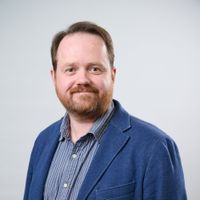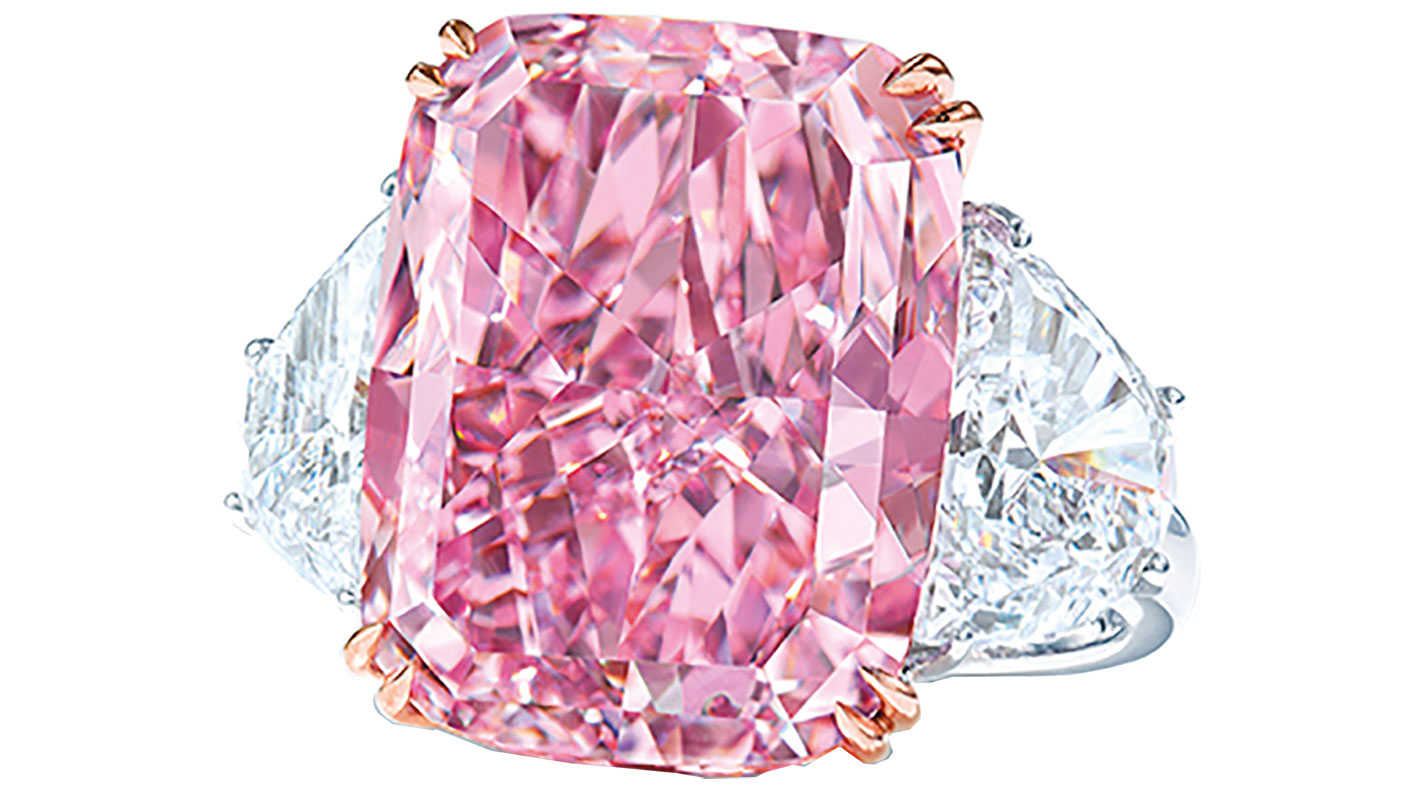Diamonds regain their sparkle as buyers return
The gem market has been stricken by Covid-19. It will recover, says Chris Carter


Japan’s sakura cherry-blossom season peaked this year in the city of Kyoto on 26 March, according to Osaka University. That makes it the earliest flowering in 1,200 years. The previous record of a day later had been set in 1409. But for auction houses in Asia rocked by last year’s pandemic, the lucrative spring-sales season can’t come soon enough. Christie’s in Hong Kong is trying to capture a little of the flower power in auctioning off the “Sakura Diamond” on 23 May. With its “perfect display of strong saturation and remarkable pink hue with a secondary colour of purple, [the Sakura Diamond resembles] the fascinating colour of cherry blossoms – appropriately coinciding with spring”, says the auction house.
The rich celebrate
The gem is a “fancy vivid purple-pink internally flawless” diamond, weighing 15.81 carats, and the largest such “purple-pink” stone to come to auction since the “Spirit of the Rose” last November. That one, a 14.8-carat purple-pink diamond, sold for CHF24.4m (£20.1m) with Sotheby’s in Geneva. This time, Christie’s in Hong Kong is hoping to fetch between HK$195m-HK$300m (£18.2m-£28m) for the Sakura Diamond. And well it might. The auction record for any gemstone was set by the “Pink Star” in 2017, when Sotheby’s sold the 59.6-carat “vivid pink” gem for HK$553m (£57m).
These sales might lead you to think coloured diamonds are common. But they are, in fact, among the rarest of gemstones. Pink diamonds are rarer still, falling under the rare Type IIa category of diamonds, which makes up less than 2% of all gem diamonds, notes Christie’s. And only 4% of those possess a colour deep enough to qualify as “fancy vivid”, according to the grading body, the Gemological Institute Of America (GIA).
MoneyWeek
Subscribe to MoneyWeek today and get your first six magazine issues absolutely FREE

Sign up to Money Morning
Don't miss the latest investment and personal finances news, market analysis, plus money-saving tips with our free twice-daily newsletter
Don't miss the latest investment and personal finances news, market analysis, plus money-saving tips with our free twice-daily newsletter
But while exceptional, even coloured diamonds have not been immune to disruptions caused by Covid-19, with the market “somewhat stymied by the pandemic”, says Andrew Shirley in the recently released The Wealth Report 2021 from Knight Frank. Its sub-index for coloured diamonds fell by 1% last year, having risen by 39% over the past decade. That was mainly due to logistical delays in sending and receiving the diamonds, adds Miri Chen of the Fancy Color Research Foundation, the compiler of the sub-index. This year should hopefully be better. “It seems that HNWIs (high net worth individuals) can’t wait to compensate themselves for 2020, celebrate and buy the jewellery that they could not purchase during Covid-19,” says Chen. The closure of Rio Tinto’s Argyle mine in Western Australia last November is another reason the market may yet regain its sparkle. It had been, as Kate Youde put it in the Financial Times, “the only consistent source of pink diamonds… responsible for 90% of the world’s supply”.
Treat yourself to a royal tiara
It’s not often that you get to “try before you buy” when it comes to auctions, but Sotheby’s has embraced the digital realm to enable royal wannabes to do just that. Last week, the auction house launched a filter on social-media app Instagram, in partnership with London-based firm Popular Studio, that allows users to “try on” an auctioned headpiece against the backdrop of the Palazzina di Caccia di Stupinigi in Turin, Italy – formerly a royal hunting lodge for the House of Savoy.
The tiara itself is no less a feat of fashion wizardry. Believed to have been created in the 19th century by Turin-court jeweller Musy Padre e Figli, using natural pearls and diamonds, it was likely presented to Maria Vittoria dal Pozzo, an Italian noblewoman, as a wedding gift on the occasion of her marriage in 1867 to Amadeo I of Savoy, Duke of Aosta and later, briefly King of Spain.
Natural pearls and, of course, tiaras have long been associated with royalty and aristocracy. For the rest of us, there’s the app. That is unless you have at least CHF930,000 (£713,000) to spare, the minimum Sotheby’s expects the Savoy tiara to fetch when it makes its auction debut as part of the Magnificent Jewels and Noble Jewels sale on 11 May in Geneva.
“Tiaras have always been the crowning glory of major jewellery collections, but, in the past decade, their popularity has soared to unprecedented heights,” says Benoit Repellin, who is leading the sale. Royal weddings have sparked a return to favour for bejewelled headpieces, particularly among buyers in Asia, who have bought a third of the tiaras offered by Sotheby’s over the past five years. To meet demand, Sotheby’s says it quadrupled the number of tiaras it brought to auction in Hong Kong during that time.
Auctions
Going…

Sotheby’s in New York is to offer the “fabled and elusive” 1933 Double Eagle gold coin on 8 June, as part of its “Three Treasures – Collected by Stuart Weitzman” sale. The $20 coin (pictured) was the last US gold coin intended for circulation before President Franklin Roosevelt took the country off the gold standard later that year. All of the coins were ordered to be melted down, but a few were stolen from the US Mint. In 1996, the US government seized the present example, and after a complicated legal battle permitted it to be the sole 1933 Double Eagle coin for private ownership. It is valued at between $10m and $15m. The other two “treasures” in Weitzman’s collection are an 1856 British Guiana one-cent magenta stamp, with the same valuation, and the US 24-cent inverted Jenny Plate block of stamps from 1918, which are expected to fetch between $5m and $7m.
Gone…
A US $5 Half Eagle gold coin from 1822 fetched $8.4m late last month with auctioneer Stack’s Bowers Galleries in Las Vegas. The coin, featuring Lady Liberty and an eagle on the back, is one of three still in existence, with the other two held by the Smithsonian Institution in Washington DC, says Barron’s Penta. For now, the record for the most expensive coin rests with the 1794 “Flowing Hair” silver coin, which fetched $10m, also with Stack’s Bowers Galleries in 2013; the 1787 Brasher Doubloon, with a face value of $15, sold for $9.4m with Texas-based Heritage Auctions in January.
Get the latest financial news, insights and expert analysis from our award-winning MoneyWeek team, to help you understand what really matters when it comes to your finances.

-
 Investors will reap long-term rewards from UK equities
Investors will reap long-term rewards from UK equitiesOpinion Nick Train, portfolio manager, Finsbury Growth & Income Trust, highlights three UK equities where he’d put his money
-
 The graphene revolution is progressing slowly but surely
The graphene revolution is progressing slowly but surelyEnthusiasts thought the discovery that graphene, a form of carbon, could be extracted from graphite would change the world. They might've been early, not wrong.
-
 'Investors will reap long-term rewards from being bullish on UK equities'
'Investors will reap long-term rewards from being bullish on UK equities'Opinion Nick Train, portfolio manager, Finsbury Growth & Income Trust, highlights three UK equities where he’d put his money
-
 The graphene revolution is progressing slowly but surely – how to invest
The graphene revolution is progressing slowly but surely – how to investEnthusiasts thought the discovery that graphene, a form of carbon, could be extracted from graphite would change the world. They might've been early, not wrong.
-
 A strong year for dividend hero Murray International – can it continue its winning streak?
A strong year for dividend hero Murray International – can it continue its winning streak?Murray International has been the best-performing global equity trust over the past 12 months, says Max King
-
 The shape of yields to come
The shape of yields to comeCentral banks are likely to buy up short-term bonds to keep debt costs down for governments
-
 The sad decline of investment clubs – and what comes next
The sad decline of investment clubs – and what comes nextOpinion Financial regulation and rising costs are killing off investment clubs that once used to be an enjoyable hobby, says David Prosser
-
 How to profit from the UK leisure sector in 2026
How to profit from the UK leisure sector in 2026The UK leisure sector had a straitened few years but now have cash in the bank and are ready to splurge. The sector is best placed to profit
-
 Who won the streaming wars?
Who won the streaming wars?The battle of the TV and film streaming giants for dominance looks to be entering a final phase. The likely winner may surprise you, says Simon Wilson
-
 'Investors should expect a good year for equities'
'Investors should expect a good year for equities'Opinion The economy is positive, and investors are still cautious, says Max King